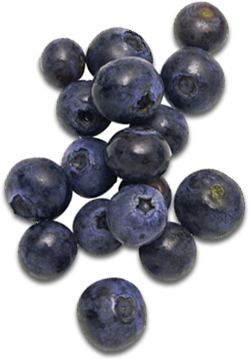no items to display
Where the Whole Grains Are
It’s Whole Grains Month! We’re celebrating the close of this delicious, nutritious September by busting some common myths about whole grains. Whether you’re a whole grain newbie or quinoa cooking expert, staying informed about the risks and benefits of your favorite foods can make a hugely positive impact on your health. Test your whole grain knowledge by checking out the myths and facts below.
Myth: I shouldn’t eat brown rice due to the presence of phytates.
It’s true that phytates, dubbed the “anti-nutrient” by some in the health community, are present in brown rice. And although brown rice is packed with protein, fiber and vitamin B, phytates can work against these nutrients by significantly slowing absorption. But this shouldn’t keep you from consuming this classic whole grain. Pairing it with veggies and a protein will ensure you get any nutrients your body wasn’t able to absorb from the rice. The key is eating this food in moderation as part of a healthy diet.
Myth: Quinoa has more calcium than a glass of milk.
Quinoa is one of our favorite superfoods, but it’s not that super! While quinoa boasts about 100 milligrams of calcium per cup—more than most grains—a cup of cow’s milk contains over 300 milligrams. Of course, it’s not just calcium that makes quinoa great; this grain is also rich in iron, magnesium, potassium, phosphorus, B-vitamins and fiber. Quinoa is also one of very few plant-based foods to contain all nine essential amino acids. So, though you can’t get your daily dose of calcium in just one cup of quinoa, you’ll certainly be on the right track!
Myth: A quick bowl of instant oatmeal is the healthiest way to start my day.
Drop the instant oatmeal! Many of these packets are highly refined and pumped with unnecessary sugar. If you crave a bowl of oats in the morning, try making some homemade oatmeal with rolled oats and sweeten up your bowl with honey or fruit. If saving time is crucial for you in the morning, try out some breakfast meal prep with these “instant” oatmeal jars you can customize at home. Benefits of these natural, whole grain oats include lowered risk of heart disease and lowered cholesterol.
Trending Now: Amaranth, Farro and Spelt
Now that we’ve dispelled the myths, it’s time to focus on the facts! Because three to five servings of whole grains a day keeps the doctor away, we’ve listed the health benefits of some of our favorite up-and-coming grains below. Check out this list of the trending grains we just can’t get enough of!
Amaranth, like quinoa, is actually a seed, as well as a complete protein, containing all essential amino acids. Additionally, amaranth is packed with key vitamins and minerals including calcium, iron and vitamin C, among others. Try it in this breakfast recipe with walnuts and honey!
Farro, on the other hand, is a grain popular in many Mediterranean and Middle Eastern cultures. Benefits of farro include high amounts of calcium and protein. This whole grain tastes delicious with veggies; try it in a balsamic farro salad with tomatoes, grilled veggies and kale.
And last but certainly not least—spelt. Spelt is a lesser-known whole grain that is similar to wheat. However, this trending whole grain is slightly higher in protein and zinc. Spelt is also an excellent source of vitamin B, iron, manganese and phosphorous. If it’s your first time cooking with spelt, try out this simple but tasty blueberry spelt muffins recipe.
What are some up-and-coming whole grains you’ve been loving? Have any other great grain recipes? Share with us in the comments below!





